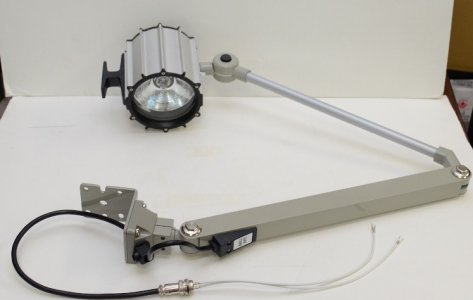- Joined
- Jun 12, 2014
- Messages
- 4,811
The light on my 3 phase lathe was 24VAC running off a step down transformer connected between 2 of the legs of the power. The supplied work light on these are 24V, AC or DC, usually 50 or 70W bulb. Since I switched mine out to a VFD, I got rid of the transformer and replaced it with a 100W 24VDC PWM power supply (REIGNPOER / NL1100D-24) , which runs off of any voltage 100-240VAC. I went to a LED bulb, due to much less heat, but stock bulb works fine also. A possible option if you do not have multiple items requiring 120VAC. Not very familiar with RPCs, but without a neutral you would need a dual pole switch as mentioned earlier, and there is also a matter of fusing. Lights like the one below (24 or 120VAC), use a single pole switch.



